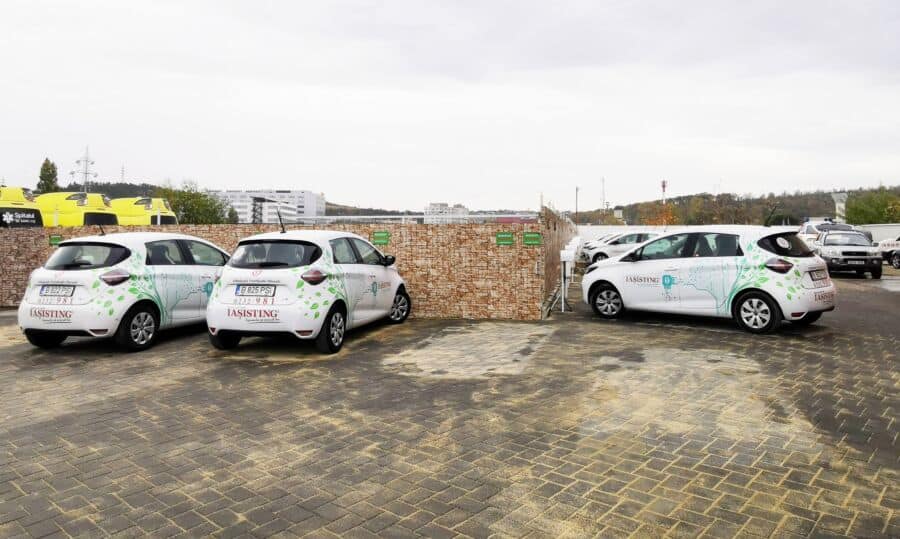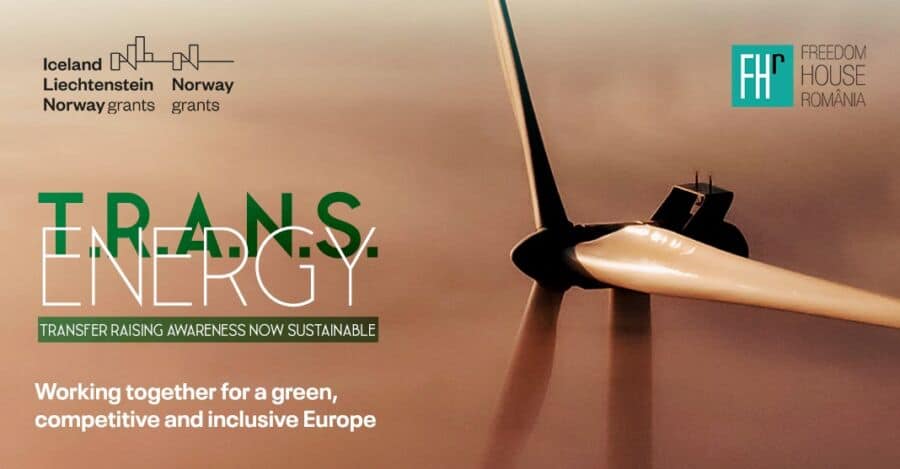How efficient electric cars are. Operating costs have been reduced from 3,200 lei/car to 1,200 lei/car (643 euro/car to 241 euro/car).
„In two years we’ve only changed the windscreen fluid. They haven’t had any breakdowns,” explained Viorel Blăjuț, the administrator of Iasiisting, a company that in 2021 took a radical decision: replacing cars with thermal engines with electric ones.
Read also: How to produce more green energy. Experience exchange between Romania and Norway
Viorel Blăjuț bought 32 Renault Zoe, a few Kangoo and Spring, all electric. After the lease payments, the electric fleet will save the company 3 million lei over three years.
Now, with all the energy consumed and the leasing value (350 euros/month), the car expenses are lower than before, when they used thermal engines.
One of the most inspired investments
The company Iasiisting took a radical decision in 2021: it replaced its combustion engine cars with electric ones.
„People close to me used to tell me that electric cars had no future, that it was the biggest mistake. We even kept a few classic-engine cars out of fear that the electrics wouldn’t cope,” explained Viorel Blăjuț, the majority shareholder of Iasiisting.
Read also: EXCLUSIVE Romania owes Ukrainian refugees 300 million lei. Instead, sends them to work
Two years after the purchase, he says it’s one of the most inspired investments he’s ever made, with unexpectedly high returns.

The largest electric car fleet
„At the time of the decision to replace all of the company’s classic cars with electric cars, we were going to have the largest fleet of this kind in Romania, with the exception of taxi and delivery cars. People close to me told me I was making a mistake. Even I doubted the decision”, says Viorel Blăjuț.
The company acted intelligently: it put the two Renault dealers in Iasi in competition to get the best price. The winning bid was made by BRAS, but Renault Romania eventually got in on the deal.
They went for the Renault Zoe, with free technical checks, a set of winter tyres, near-zero interest rates and, very importantly, fast charging stations provided. These would have been a substantial financial effort, but Renault Romania offered them for free.
1 million euro investment in 5 years
In September 2021, 25 new cars arrived in Iasi, followed by another 7 Zoe, 6 Kangoo and 4 Dacia Spring. In total, the electric fleet has 42 new vehicles, the total investment of the company is almost 1 million euros, money that will be paid in 5 years.
„Obviously, we benefited from national programmes, so the price of a 30,000 euro car came to around 20,000 euro, which is the amount we pay in instalments,” explained Viorel Blăjuț.
The monthly rate, excluding CASCO and RCA, is 350 euros per car. But with this rate, the company is getting out cheaper than before with the old fleet.
The numbers show how profitable they are
Thermal engine cars spend about 3,000 lei/month on fuel. This amount represents the monthly average of all cars used by employees in the field.
To these expenses were added spare parts, maintenance, consumables for oil and filter changes.
„They were old cars. They broke down, we spent a lot of money on servicing. We were spending several hundred lei a month on each car. But the biggest expense was the fuel”, Viorel Blăjuț explained.
Electric cars have a completely different operating cost, when averaged out: about 1,200 lei per cylinder per month.
„About 60% is the monthly drop in operating costs. I mean, on a total fleet of 42 cars the fuel expense was 126,000 lei/month in the past. The same new cars now consume 50,400 lei/month. The numbers speak for themselves.
With the monthly rate we are below the amounts previously paid by the company and we have not counted here the money for revisions, consumables and breakdowns. Because for two years we have only been putting windscreen fluid in these cars.
No work has been necessary on any of the cars. Zero cost of consumables and service,” the owner of IasiSisting explains.
In addition, the company also got rid of the annual car tax. The tax on electricity is zero, so it saves another 10,000 lei/year.
Summary of amounts
Old cars consumed fuel of 3,000 lei on average per month, plus average service and maintenance costs of 200 lei per month. In total, 3,200 lei/car/month. Total cost 134,400 lei for the whole fleet.
New cars consume electricity of 1,200 lei per month, plus a rate of 350 euro (1,750 lei).
Total: 2,950 lei/car/month, whitch mean 123,900 lei.
Advantages: these are new cars, which have been in operation for at least 5 years with minimal costs for the company. If the old ones ran for another 5 years, the operating costs would be much higher because the money spent on parts and repairs would be more.
After the last instalment in year 5, the difference in operating cost will be 2,000 lei per month per car, or 84,000 lei. The new cars have an 8 year battery warranty.
So, at least 3 years after the end of the instalments, the 32 Renault Zoe, 6 Kangoo and 4 Dacia Spring will bring the company a total saving of 3 million lei.
How much range do they have in real conditions
The question everyone asks when it comes to electrics is how much range they actually have.
Under everyday operating conditions, the company’s drivers have seen the Renault Zoe go almost 200 miles in summer without any problems. That’s below the official range declared by the manufacturer (395 km in mixed urban/extra-urban conditions).
In winter, the range drops to 250 kilometres, which is exactly what Renault officially says. For the Kangoo it’s similar, but for the Dacia Spring the real range is low: they get down to 100 km maximum.
„Besides, these are only used by the company’s novice drivers, they are not the cars on which we base our business,” Viorel Blăjuț explained.
Follow PressHUB on Google News!





